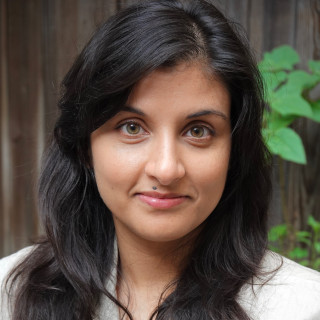The death of Dr. Lorna Breen on April 26, widely reported as a secondary casualty of COVID-19, felt like a warning shot in a coming war. Dr. Breen was an ER physician who died by suicide, and from my limited experience, physician suicides in New York City happen in clusters. Before I moved to NYC, and before 2020, "cluster" as a word generally carried positive associations, of bees, or grapes, and other summery things. Now, this year in particular, it means death and disease.
I am a psychiatrist, and our profession has a very complicated relationship with suicide. Two conflicting impulses, acceptance and rejection, have combined uneasily into a general stance — suicides are preventable and not all suicides can be prevented. For my co-resident, who died by suicide in 2018, it was never quite clear whether her death was stoppable or inevitable. Two years later, during this fitful spring, I fretted over the same unanswerable question for Dr. Breen and wondered how many more times I would have to ask it.
As a psychiatry intern, I was started in "process group," which I accepted along with all things intern year with bewilderment and a sense of the inevitable. We met weekly for all four years of my training. I’ve never hit upon a particularly good definition of process groups — what they are not is support or psychoeducation. The goal of process group isn’t to feel better or review coping skills. I learned several things from mine: how to identify when I was hiding behind my language, how to see my colleagues as people, the exquisite bravery of vulnerability, bearing deep currents of emotion, and how to find safety in an unsafe world. This hodgepodge of abstract language is mostly to say that I learned how to survive a crisis by becoming closer to my colleagues.
For me, suicide flips the world upside down — the assumptions and certainties I had about the world are upended and I am unmoored. In the past, groups helped me grope my way back to a point of stability, until I reached some provisional peace with what had happened. When COVID-19 came roaring into the foreground, I wanted more than anything to reach out to the doctors around me and together do that peculiar alchemy where pain becomes a catalyst for healing.
The institution I am in was very supportive of my group, though perhaps a little confused by the concept. I framed it as an opportunity to help house staff through a stressful time. It is hard normally to be a doctor, but even harder when people are dying in great numbers and there is not enough PPE to go around. Because of the risk of contagion, the group was confined to a digital platform, which I knew would make an awkward experience even more uncomfortable. Still, I got my blessings, set a time, and sent some emails. The first few times, a couple people flickered into the group, their usernames popping up and disappearing like fireflies. After that, it was week after week of silence.
In May, I had a particularly tiring weekend call, much of it with patients who had COVID-19. The days were full of ventilators and delirium, doffing and donning PPE, all in a muffled loneliness. The following week, I felt a sort of nausea when hosting the group, which at that point meant essentially sitting and waiting in front of an open computer screen. The thought of dredging up the memory of those frail, drowning patients I was unable to help was too much to contemplate. My mouse hovering over the “start meeting” button, I made a choice to shut the computer and answer silence with my own mute disengagement.
Thinking back, I can imagine so much was being said by our collective silence.
Don’t ask anything more of me, I have nothing left to give.
I’m frightened and sad, but acknowledging that feels bad.
“--- off, you can’t make this better.
These sentiments, though, are probably only my own, heard and misattributed, like a heartbeat pulsing in a still ear. There are only monologues in a vacuum, and ultimately one silence more terrifying than them all. By all accounts, the aftermath of the virus and the long war is coming. The questions remain: How do you reach people when contact carries mortal risk? How can our community stop living in fragments?
Diya Banerjee is currently a fellow in the Memorial Sloan Kettering Cancer Center Clinical Fellowship in Psychosomatic Medicine and Psycho-oncology Program. She grew up in Houston, TX and moved to the East Coast for college at Yale, then returned to Houston for medical school at Baylor College of Medicine. Dr. Banerjee did her residency training in Psychiatry at NYU. In college, she majored in Comparative Literature and during training has maintained an interest in how medicine and the humanities intersect.
Click here to see more perspectives on COVID-19 from the Doximity network.
Click here for up-to-date news about COVID-19 on Doximity.
Illustration by Jennifer Bogartz







